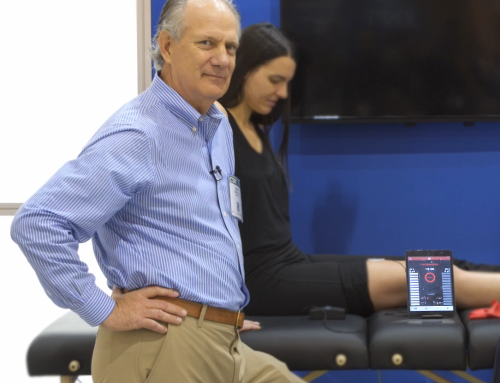Nerve Injury Basics
It is estimated that up to 20 million people in the US suffer from some form of peripheral nerve damage that can cause symptoms such as atrophy/weakness, twitching, paralysis, pain, sensitivity, numbness, tingling or prickling, burning, and problems with proprioception. [4]
People that suffer from upper extremity nerve injury often require nerve transfer surgery or bionic reconstruction to regain functionality. Nerve transfer surgery is necessary when a nerve injury causes loss of function and/ or sensation in the muscles. The surgery takes nerve branches from a neighboring nerve and reattaches them to the distal end of the injured nerve. [1] When the new nerve endings are attached, the brain will not immediately recognize the nerves or their new arrangement, but over time the brain will form new connections to improve control and functionality as the patient re-learns to utilize their nerves and muscles.
Bionic reconstruction consists of being fitted with a prosthetic limb (also known as a myoelectric prosthesis; see review article here [6]) when the biological limb (often the hand and/or part of the arm) loses function that cannot be regained with nerve transfer surgery. The nerve injury recovery process is an excellent demonstration of the brain’s plasticity and remarkable ability to adapt to new conditions!
Motor Recovery of the Hand
Let’s discuss a more detailed example: motor recovery of the hand(s). In order to regain functionality of the hands, patients must go through motor recovery by re-engaging the affected axons of the neuromotor pathway. Performing exercises that engage the impaired muscle improve the body’s awareness of the muscle as the neuromuscular pathway fires repetitively. sEMG biofeedback is utilized to observe how well the muscle is contracting. By utilizing biofeedback, the patient learns how to isolate and control specific muscle groups; the visualization of performance and progress is also motivating for patients as they build up the strength and stamina required to either regain natural functionality or prepare to operate a prosthetic. In patients using a prosthetic hand, their therapy focuses on finding sEMG signals in the remaining limb and turning those signals into function controls in the prosthetic.
How Biofeedback Can Help
These are trying rehab processes, as it takes time for the affected nerves to learn their new firing patterns and achieve basic movements that greatly impact independence and quality of life. Naturally, such a process can be frustrating. We believe it is critical to patient success to get them mentally as well as physically engaged in their rehabilitation process through the use of tools like biofeedback. Motor relearning is inherent to the recovery process after upper limb nerve damage, and biofeedback helps patients regain control over their muscle movements to enable short term progress and long term success.
mTrigger’s sEMG biofeedback can assist in the recovery of nerve injuries by allowing patients to visualize their muscle contractions during physical therapy sessions. When the biofeedback interface cues the patient to contract, the patient will see the strength of their contraction via a display bar that shows the electrical activity generated by the target muscle. Patients and providers can observe whether the proper muscles are being activated so that they can improve performance in real time. Communicating to patients how they are performing and showing the value of putting in the effort goes a long way. mTrigger helps to achieve this in a way that is engaging, competitive, and fun! Over time, practicing specific activation patterns will re-educate the neuromuscular pathway, and the affected nerves will relearn how to properly activate.
All in all, biofeedback is an incredibly powerful tool in recovering from nerve injury! [3]
REFERENCES
[1] Karamanos, 2018. “Nerve Transfer Surgery for Penetrating Upper Extremity Injuries”
[2] https://www.ncbi.nlm.nih.gov/pmc/articles/PMC6288367/
[5] https://www.assh.org/handcare/condition/nerve-injury
[6] Geethanjali, 2016. “Myoelectric control of prosthetic hands: state-of-the-art review”








Leave A Comment